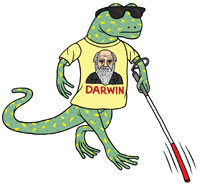On Wednesday I received 72 e-mails, not counting junk, and only two text messages. It was a quiet day but, then again, I’m not including the telephone calls. I’m also not including the deafening and pointless announcements on a train journey to Wakefield – use a screen, jerks – the piercingly loud telephone conversations of unsocialised adults and the screaming of untamed brats. And, come to think of it, why not include the junk e-mails? They also interrupt. There were 38. Oh and I’d better throw in the 400-odd news alerts that I receive from all the websites I monitor via my iPhone.
I was – the irony! – trying to read a book called Distracted: The Erosion of Attention and the Coming Dark Age by Maggie Jackson. Crushed in my train, I had become the embodiment of T S Eliot’s great summary of the modern predicament: “Distracted from distraction by distraction”. This is, you might think, a pretty standard, vaguely comic vignette of modern life – man harassed by self-inflicted technology. And so it is. We’re all distracted, we’re all interrupted. How foolish we are! But, listen carefully, it’s killing me and it’s killing you.
David Meyer is professor of psychology at the University of Michigan. In 1995 his son was killed by a distracted driver who ran a red light. Meyer’s speciality was attention: how we focus on one thing rather than another. Attention is the golden key to the mystery of human consciousness; it might one day tell us how we make the world in our heads. Attention comes naturally to us; attending to what matters is how we survive and define ourselves.
The opposite of attention is distraction, an unnatural condition and one that, as Meyer discovered in 1995, kills. Now he is convinced that chronic, long-term distraction is as dangerous as cigarette smoking. In particular, there is the great myth of multitasking. No human being, he says, can effectively write an e-mail and speak on the telephone. Both activities use language and the language channel in the brain can’t cope. Multitaskers fool themselves by rapidly switching attention and, as a result, their output deteriorates.
The same thing happens if you talk on a mobile phone while driving – even legally with a hands-free kit. You listen to language on the phone and lose the ability to take in the language of road signs. Worst of all is if your caller describes something visual, a wallpaper pattern, a view. As you imagine this, your visual channel gets clogged and you start losing your sense of the road ahead. Distraction kills – you or others.
Chronic distraction, from which we all now suffer, kills you more slowly. Meyer says there is evidence that people in chronically distracted jobs are, in early middle age, appearing with the same symptoms of burn-out as air traffic controllers. They might have stress-related diseases, even irreversible brain damage. But the damage is not caused by overwork, it’s caused by multiple distracted work. One American study found that interruptions take up 2.1 hours of the average knowledge worker’s day. This, it was estimated, cost the US economy $588 billion a year. Yet the rabidly multitasking distractee is seen as some kind of social and economic ideal.
Meyer tells me that he sees part of his job as warning as many people as possible of the dangers of the distracted world we are creating. Other voices, particularly in America, have joined the chorus of dismay. Jackson’s book warns of a new Dark Age: “As our attentional skills are squandered, we are plunging into a culture of mistrust, skimming and a dehumanising merger between man and machine.”
Mark Bauerlein, professor of English at Emory University in Atlanta, has just written The Dumbest Generation: How the Digital Age Stupefies Young Americans and Jeopardises Our Future. He portrays a bibliophobic generation of teens, incapable of sustaining concentration long enough to read a book. And learning a poem by heart just strikes them as dumb.
In an influential essay in The Atlantic magazine, Nicholas Carr asks: “Is Google making us stupid?” Carr, a chronic distractee like the rest of us, noticed that he was finding it increasingly difficult to immerse himself in a book or a long article – “The deep reading that used to come naturally has become a struggle.”
Instead he now Googles his way though life, scanning and skimming, not pausing to think, to absorb. He feels himself being hollowed out by “the replacement of complex inner density with a new kind of self – evolving under the pressure of information overload and the technology of the ‘instantly available’”.
“The important thing,” he tells me, “is that we now go outside of ourselves to make all the connections that we used to make inside of ourselves.” The attending self is enfeebled as its functions are transferred to cyberspace.
“The next generation will not grieve because they will not know what they have lost,” says Bill McKibben, the great environmentalist.
McKibben’s hero is Henry Thoreau, who, in the 19th century, cut himself off from the distractions of industrialising America to live in quiet contemplation by Walden Pond in Massachusetts. He was, says McKibben, “incredibly prescient”. McKibben can’t live that life, though. He must organise his global warming campaigns through the internet and suffer and react to the beeping pleading of the incoming e-mail.
“I feel that much of my life is ebbing away in the tide of minute-by-minute distraction . . . I’m not certain what the effect on the world will be. But psychologists do say that intense close engagement with things does provide the most human satisfaction.” The psychologists are right. McKibben describes himself as “loving novelty” and yet “craving depth”, the contemporary predicament in a nutshell.
Ironically, the companies most active in denying us our craving for depth, the great distracters – Microsoft, Google, IBM, Intel – are trying to do something about this. They have formed the Information Overload Research Group, “dedicated to promoting solutions to e-mail overload and interruptions”. None of this will work, of course, because of the overwhelming economic forces involved. People make big money out of distracting us. So what can be done?
The first issue is the determination of the distracters to create young distractees. Television was the first culprit. Tests clearly show that a switched-on television reduces the quality and quantity of interaction between children and their parents. The internet multiplies the effect a thousandfold. Paradoxically, the supreme information provider also has the effect of reducing information intake.
Bauerlein is 49. As a child, he says, he learnt about the Vietnam war from Walter Cronkite, the great television news anchor of the time. Now teenagers just go to their laptops on coming home from school and sink into their online cocoon. But this isn’t the informational paradise dreamt of by Bill Gates and Google: 90% of sites visited by teenagers are social networks. They are immersed not in knowledge but in “gossip and social banter”.
“They don’t,” says Bauerlein, “grow up.” They are “living off the thrill of peer attention. Meanwhile, their intellects refuse the cultural and civic inheritance that has made us what we are now”.
The hyper-connectivity of the young is bewildering. Jackson tells me that one study looked at five years of e-mail activity of a 24-year-old. He was found to have connections with 11.7m people. Most of these connections would be pretty threadbare. But that, in a way, is the point. All internet connections are threadbare. They lack the complexity and depth of real-world interactions. This is concealed by the language.
Join Facebook or MySpace and you suddenly have “friends” all over the place. Of course, you don’t. These are just casual, tenuous electronic pings. Nothing could be further removed from the idea of friendship.
These connections are severed as quickly as they are taken up – with the click of a mouse. Jackson and everyone else I spoke to was alarmed by the potential impact on real-world relationships. Teenagers are being groomed to think others can be picked up on a whim and dropped because of a mood or some slight offence. The fear is that the idea of sticking with another through thick and thin – the very essence of friendship and love – will come to seem absurd, uncool, meaningless.
One irony that lies behind all this is the myth that children are good at this stuff. Adults often joke that their 10-year-old has to fix the computer. But it’s not true. Studies show older people are generally more adept with computers than younger. This is because, like all multitaskers, the kids are deluding themselves into thinking that busy-ness is depth when, in fact, they are skimming the surface of cyberspace as surely as they are skimming the surface of life. It takes an adult imagination to discriminate, to make judgments; and those are the only skills that really matter.
The concern of all these writers and thinkers is that it is precisely these skills that will vanish from the world as we become infantilised cyber-serfs, our entertainments and impulses maintained and controlled by the techno-geek aristocracy. They have all noted – either in themselves or in others – diminishing attention spans, inability to focus, a loss of the meditative mode. “I can’t read War and Peace any more,” confessed one of Carr’s friends. “I’ve lost the ability to do that. Even a blog post of more than three or four paragraphs is too much to absorb. I skim it.”
The computer is training us not to attend, to drown in the sea of information rather than to swim. Jackson thinks this can be fixed. The brain is malleable. Just as it can be trained to be distracted, so it can be trained to pay attention. Education and work can be restructured to teach and propagate the skills of concentration and focus. People can be taught to turn off, to ignore the beep and the ping.
Bauerlein, dismayed by his distracted students, is not optimistic. Multiple distraction might, he admits, be a phase, and in time society will self-correct. But the sheer power of the forces of distraction is such that he thinks this will not happen.
This, for him, puts democracy at risk. It is a form of government that puts “a heavy burden of responsibility on our citizens”. But if they think Paris is in England and they can’t find Iraq on a map because their world is a social network of “friends” – examples of appalling ignorance recently found in American teenagers – how can they be expected to shoulder that burden?
This may all be a moral panic, a severe case of the older generation wagging its finger at the young. It was ever thus. But what is new is the assiduity with which companies and institutions are selling us the tools of distraction. Every new device on the market is, to return to Eliot, “Filled with fancies and empty of meaning / Tumid apathy with no concentration”.
These things do make our lives easier, but only by destroying the very selves that should be protesting at every distraction, demanding peace, quiet and contemplation. The distracters have product to shift, and it’s shifting. On the train to Wakefield, with my new 3G iPhone, distracted from distraction by distraction, I saw the future and, to my horror, it worked.
Original here




 Getty Images ©
Getty Images © 

















